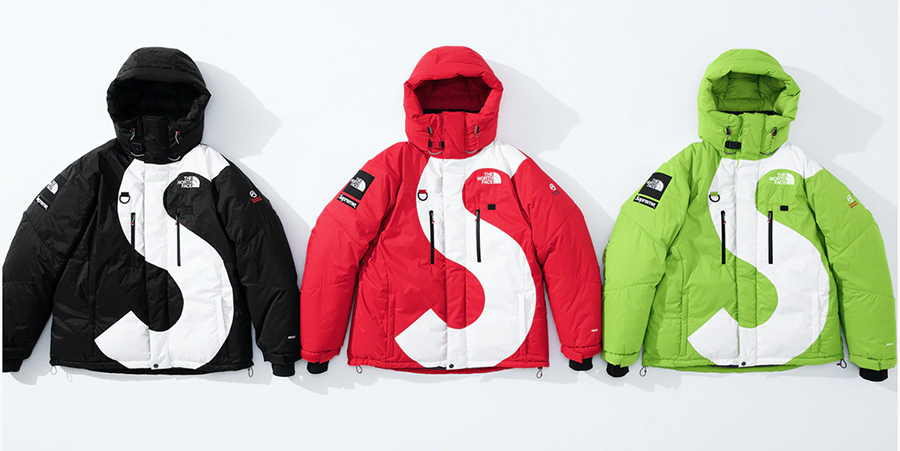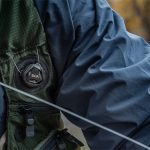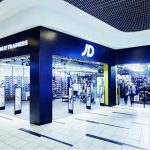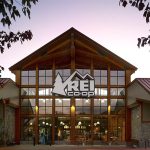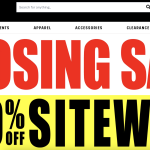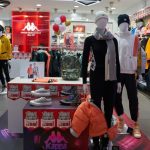VF Corp. announced plans to acquire Supreme, the streetwear brand with a cult following, eyeing a $1 billion global opportunity over time. The brand currently does about $500 million in annual sales.
The deal, expected close by the end of the year, will see VF pay $2.1 billion, or 15 times EBITDA, for Supreme, with an additional $300 million payment to be made “subject to satisfaction of certain post-closing milestones.”
The selling shareholders include private equity firms Carlyle Group and Goode Partners. In 2017, the company sold a roughly 50 percent stake to private-equity firm Carlyle Group for about $500 million, giving it a valuation at the time of nearly $1 billion.
James Jebbia, Supreme’s founder, and Supreme’s senior leadership team will continue to manage the brand. Jebbia could receive a portion of the purchase price in VF equity over time. The deal is expected to close by the end of the year.
Streetwear Seen As $50 Billion Global Opportunity
On a conference call with analysts, Steve Rendle, VF chairman, president, and CEO, described Supreme as an “iconic global brand and a marquee streetwear property.”
He said the acquisition further demonstrates its commitment to evolving its portfolio of brands to align with emerging market opportunities in the apparel and footwear space and the acquisition furthers the company’s evolution toward a more consumer-minded, retail-centric, hyper-digital enterprise.
“We are confident the Supreme transaction will serve as a spark for another layer of transformative growth and value creation for VF and our stakeholders,” said Rendle.
VF estimates that the broader streetwear market is a roughly $50 billion global opportunity with a low double-digit growth profile, driven by a number of attractive secular trends, including casualization, social influence and creative self-expression.
“Supreme sits at the epicenter of this market opportunity as the original and global category leader,” said Rendle. “Streetwear is rooted in casual apparel and footwear, emerging from art, music, street and action sports subcultures, and is anchored in cultural legitimacy. This unique positioning drives strong engagement from a young and diverse consumer base.”
The category started in the U.S. market and expanded globally with aid of non-conventional marketing and distinctive product. Said Rendle, “Frequent curated drops and a constrained supply philosophy are key elements to driving continuous brand energy and strong consumer engagement. This scarcity, novelty and strong social influence model supports meaningful pricing power, resulting in best-in-class profitability.”
Rendle reminded analysts that VF said on its Investor Day in 2019 that its core category focus is on active, athleisure, outdoor and work and work-inspired, but it also saw potential growth opportunities in “several overlapping market adjacencies,” including streetwear.
Supreme, which sells apparel, accessories and footwear under its namesake brand, already has a long-partnership through collaborations with Vans, North Face and Timberland. Street-inspired aspects of Vans, The North Face, Timberland and Dickies, “capture many of the core elements of streetwear” and represent roughly $3 billion of VF’s annual revenue across brands. Said Rendle, “In fact, the street-inspired lines of our largest brands represent some of the fastest-growing segments of our portfolio today.”
Supreme Expected To Tap International And DTC Growth
Supreme generated more than $500 million in revenue over the past 12 months, more than doubling sales levels over the past four years. Scott Roe, VF’s CFO, said on the call, “During this period of explosive growth, the brand’s fundamentals have remained intact with exceptional full-price sell-through. And the business model operates with best in class profitability with gross margins of over 60 percent and operating margins of over 20 percent.”
Roe said Supreme shares a similar profile to Vans among VF’s other brands. Supreme is almost entirely a DTC business with just 12 stores globally and more than 60 percent of the brand’s revenue in digital. Supreme has a strong global presence despite a “relatively immature global footprint” with approximately 45 percent of the revenue generated outside of the U.S.
VF expects Supreme’s revenues to see 8 to 10 percent annual growth over the next five years, particularly as VF supports the brand’s international and DTC (direct-to-consumer) expansion.
“There are clear opportunities for Supreme to leverage VF’s strong international platforms and our existing digital and DTC capabilities,” said Rendle. “There are also significant opportunities for Supreme to leverage VF’s scale and expertise, to enhance its supply chain capabilities, improving operating efficiencies, explore new category adjacencies and tap into the existing consumer insight. VF is the ideal steward to honor the authentic heritage of Supreme by leveraging our scale and expertise to accelerate and enable the brand’s long-term growth vision.”
Rendle said it’s early to discuss category extensions but he agreed that footwear could be further developed given VF’s expertise.
For VF, Rendle said Supreme provides “deeper access to attractive consumer segments,” which has applications across many of VF’s existing brands. He welcomed the Supreme team to VF.
“Talent is a foundational element of the strategy, our continued success and our culture and we are thrilled to welcome Supreme to the family,” said Rendle. “The management team has already shown a clear desire to collaborate with VF in areas that will better enable their ability to execute a strong, long-term growth plan. We look forward to building on our long-term partnership going forward.”
Jebbia said in a press release, “We are proud to join VF, a world-class company that is home to great brands we’ve worked with for years, including The North Face, Vans, and Timberland. This partnership will maintain our unique culture and independence while allowing us to grow on the same path we’ve been on since 1994.”
VF plans to fund the acquisition with excess cash and commercial paper. Roe said VF’s liquidity position will remain strong following the transaction with greater than $3 billion of total available liquidity anticipated by the end of the fiscal year. While leverage metrics will remain elevated in the near term, VF plans to “rapidly de-lever” the balance sheet over the next 12 to 24 months.
The acquisition follows a number of moves in recent years to reshape its portfolio, the largest being the Williamson Dickie acquisition in 2017. VF also sold off Nautica and Reef, acquired Altra and Icebreaker, spun off Kontoor brands, its denim business, and launched a process to sell its occupational work portfolio.
Supreme Expected To Be Immediately Accretive To VF’s EPS
Roe noted that there are no cost synergies expected to support the acquisition. The CFO said, “Supreme is a unique asset led by a small but disciplined and agile management team that has presided over consistent growth during the past several years, and currently operates with industry-leading margins. Therefore, our approach to integrating the business will evolve differently than prior acquisitions. We’re planning a light-touch integration across most areas of the operations.”
However, he said VF has identified potential cost savings and synergies associated with VF’s supply chain as well as international and DTC platforms that are expected to be incremental to the returns assumed in its acquisition planning.
Supreme is expected to be immediately accretive to EPS while enhancing gross margin and VF’s cash position Assuming a closing late in calendar 2020, the acquisition is expected to be ” modestly accretive” for fiscal 2021, excluding transaction and other deal-related expenses. On a full-year basis, Supreme is expected to contribute more than $500 million in revenue and at least 20 cents of adjusted EPS in fiscal 2022.
Roe said that Supreme’s solid performance during the pandemic also provides VF with confidence in the acquisition.
Roe said, “Throughout our diligence process, we’ve been impressed by Supreme’s business model resiliency. On a year-to-date basis, including the impact of COVID-19-related disruption, Supreme’s revenue has increased at a mid-single-digit rate, including more accelerated growth since the launch of the brand’s fall-winter season, which began in August. Importantly, profitability and cash flow generation have also remained strong during this period, a clear testament to the strength of the brand and disciplined brand management. This resiliency was a key driver behind our confidence in executing a transaction of this size in the current environment.”
Photo courtesy VF Corp/Supreme x The North Face

